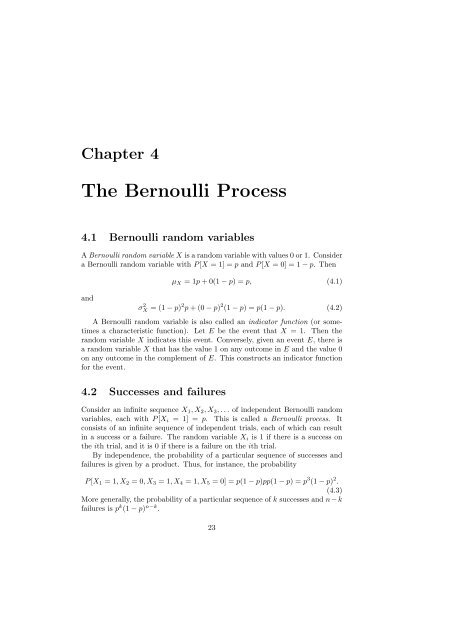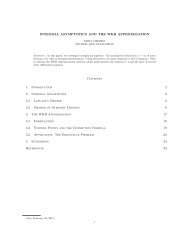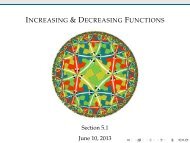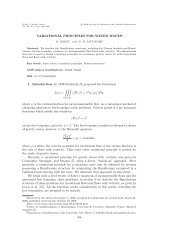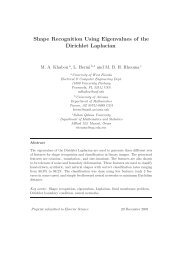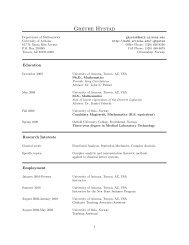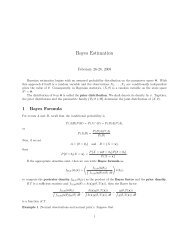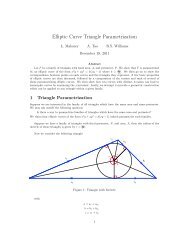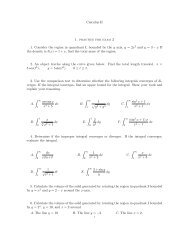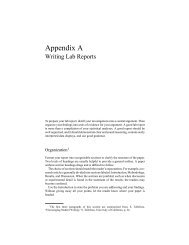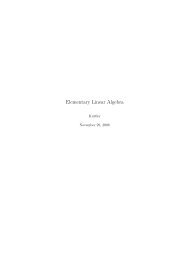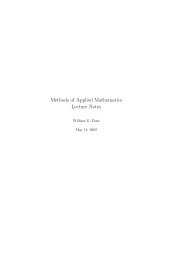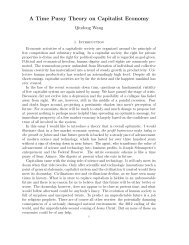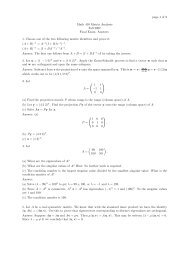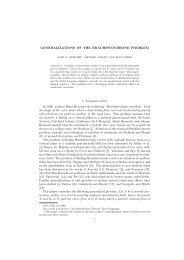Lectures on Elementary Probability
Lectures on Elementary Probability
Lectures on Elementary Probability
Create successful ePaper yourself
Turn your PDF publications into a flip-book with our unique Google optimized e-Paper software.
Chapter 4<br />
The Bernoulli Process<br />
4.1 Bernoulli random variables<br />
A Bernoulli random variable X is a random variable with values 0 or 1. C<strong>on</strong>sider<br />
a Bernoulli random variable with P [X = 1] = p and P [X = 0] = 1 − p. Then<br />
and<br />
µ X = 1p + 0(1 − p) = p, (4.1)<br />
σ 2 X = (1 − p) 2 p + (0 − p) 2 (1 − p) = p(1 − p). (4.2)<br />
A Bernoulli random variable is also called an indicator functi<strong>on</strong> (or sometimes<br />
a characteristic functi<strong>on</strong>). Let E be the event that X = 1. Then the<br />
random variable X indicates this event. C<strong>on</strong>versely, given an event E, there is<br />
a random variable X that has the value 1 <strong>on</strong> any outcome in E and the value 0<br />
<strong>on</strong> any outcome in the complement of E. This c<strong>on</strong>structs an indicator functi<strong>on</strong><br />
for the event.<br />
4.2 Successes and failures<br />
C<strong>on</strong>sider an infinite sequence X 1 , X 2 , X 3 , . . . of independent Bernoulli random<br />
variables, each with P [X i = 1] = p. This is called a Bernoulli process. It<br />
c<strong>on</strong>sists of an infinite sequence of independent trials, each of which can result<br />
in a success or a failure. The random variable X i is 1 if there is a success <strong>on</strong><br />
the ith trial, and it is 0 if there is a failure <strong>on</strong> the ith trial.<br />
By independence, the probability of a particular sequence of successes and<br />
failures is given by a product. Thus, for instance, the probability<br />
P [X 1 = 1, X 2 = 0, X 3 = 1, X 4 = 1, X 5 = 0] = p(1 − p)pp(1 − p) = p 3 (1 − p) 2 .<br />
(4.3)<br />
More generally, the probability of a particular sequence of k successes and n − k<br />
failures is p k (1 − p) n−k .<br />
23


